They’re tucked away in folders or on shelves, securely stored in nondescript boxes, and locked behind vault doors. But when summoned by a researcher, or the insatiably curious, they inspire awe, testing the limits of what a library collection can be. The bouquet of wonders in the UC Berkeley Library’s collections includes much more than books (although we have those, too — by the millions, in fact). But you won’t find any ordinary tomes here. Instead, we’re taking a look at just a few of the unexpected, unique, and otherwise intriguing materials in the Library’s collections.
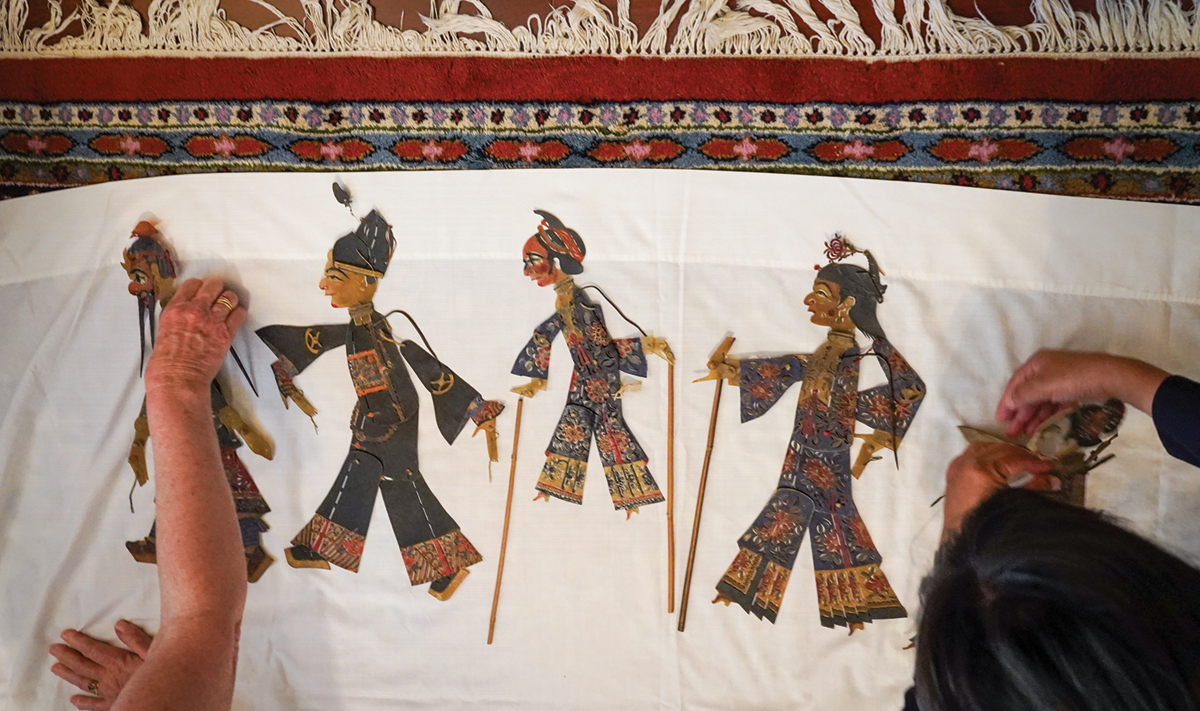
Eva and Felicitas Titus Shadow Puppet Collection
C. V. Starr East Asian Library
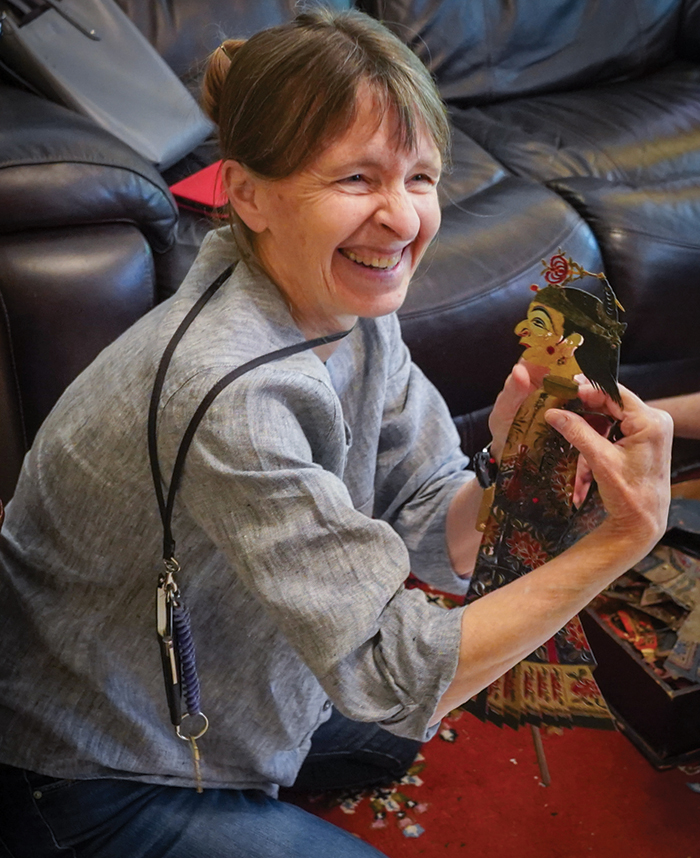
Centuries before the advent of film, a different kind of on-screen magic was capturing the imagination of audiences across China. Chinese shadow puppetry dates back to 100 B.C., taking root in the country’s Yellow River region. With the accompaniment of music, puppeteers behind an illuminated screen acted out fairy tales and legends, passing along traditions, customs, and beliefs in the process. The Eva and Felicitas Titus Shadow Puppet Collection — a set of 42 meticulously crafted puppets made of cut-and-dyed donkey skin — was recently acquired by the C. V. Starr East Asian Library, a generous gift from Christina Titus Nadendla. The puppets were obtained in the 1930s in Hankou, now part of Wuhan, by Eva Titus, Nadendla’s grandmother. The collection is named after both Nadendla’s grandmother and her aunt (Eva’s daughter), in whose care the collection resided before coming to Nadendla and, ultimately, the library. Over the years, the puppets were stored in a black lacquer box, and were occasionally taken out to be put on display. As a result, they remain in excellent condition. Although shadow puppetry has faded in popularity as new forms of storytelling have taken hold, it is included on UNESCO’s “Intangible Cultural Heritage of Humanity” list, and devoted practitioners are keeping the art form alive today. Nadendla is happy that the puppets have found a new home at the library, where they “can be enjoyed and studied by many others,” she says.
Diary of Patrick Breen
The Bancroft Library
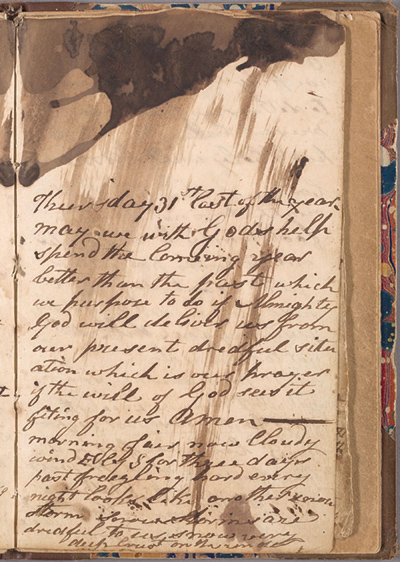
Over the generations, the story of the Donner Party has set up camp in our collective psyche, exposing the shadowy reaches of human behavior when survival hangs in the balance. Snowbound in the Sierra Nevada with their stores of food depleted, members of a party of westward travelers resorted to cannibalism, consuming the flesh of their fallen fellow sojourners. Among the band of pioneers on the overland trek were Irish immigrant Patrick Breen, his wife, Margaret, and their seven children. In his diary, held at The Bancroft Library, Breen bears witness to the ordeal. (Bancroft has digitized the diary — the only known journal kept by a member of the party that fateful winter — and has made it available online, so anyone in the world can see it.) Stark in its plainspokenness, Breen’s diary provides updates about the weather, food, and the health and deaths of travelers, while pangs of desperation creep in. “May we with Gods (sic) help spend the comeing (sic) year better than the past which we purpose to do if Almighty God will deliver us from our present dredful (sic) situation,” he writes on the last day of 1846. At times, the entries are poetic in their simplicity, even as the death count rises: “Mrs (sic) Murphy says the wolves are about to dig up the dead bodies at her shanty, the nights are too cold to watch them, we hear them howl.” With the aid of rescuers, Breen and his family were spared the fate that had befallen many of the other travelers, and by March, they had safely arrived in Sutter’s Fort, in California. Isabella — the youngest member of the Breen family, just a baby during the disaster — died in 1935 and was the party’s last surviving member.
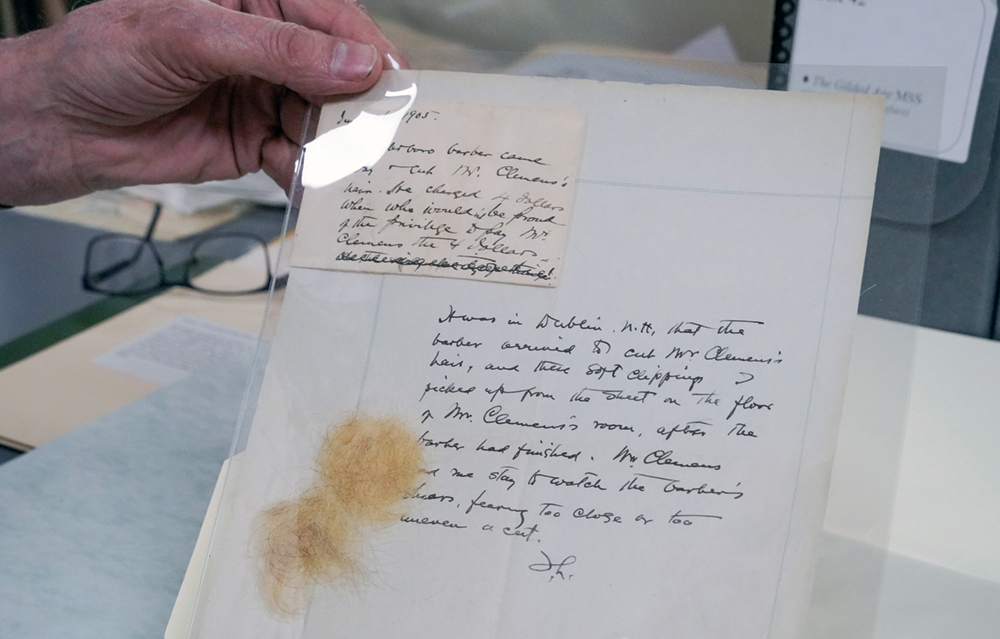
Hair of Samuel Clemens
Mark Twain Papers & Project, The Bancroft Library

The Bancroft Library’s Mark Twain Papers & Project (MTP) holds wonders including handwritten musings, stories, and other materials that flowed straight from the head of Samuel Clemens. And, yes, that includes a snippet of hair from the great American author himself. After a barbering session, a swatch of Twain’s strands was scooped up by his secretary and personal assistant, who preserved, dated, and described it — providing assurance of the specimen’s validity. In the Clemens family’s Bible, Bob Hirst, general editor of the Mark Twain Papers & Project, found what seemed to be hair from the author’s sister, Margaret, who died at age 9. DNA testing of both siblings’ hair indicated a common mother, further bolstering the case for their authenticity. Today, the hair of both siblings is safely stored in the MTP’s vault, carefully controlled for temperature and humidity. Other surprising gems at the MTP include what may be the only original photograph of a shirtless Twain, in his hirsute glory, believed to have been used to create a sculpture of the author. A photo of the bust is one of the frontispieces of Adventures of Huckleberry Finn.
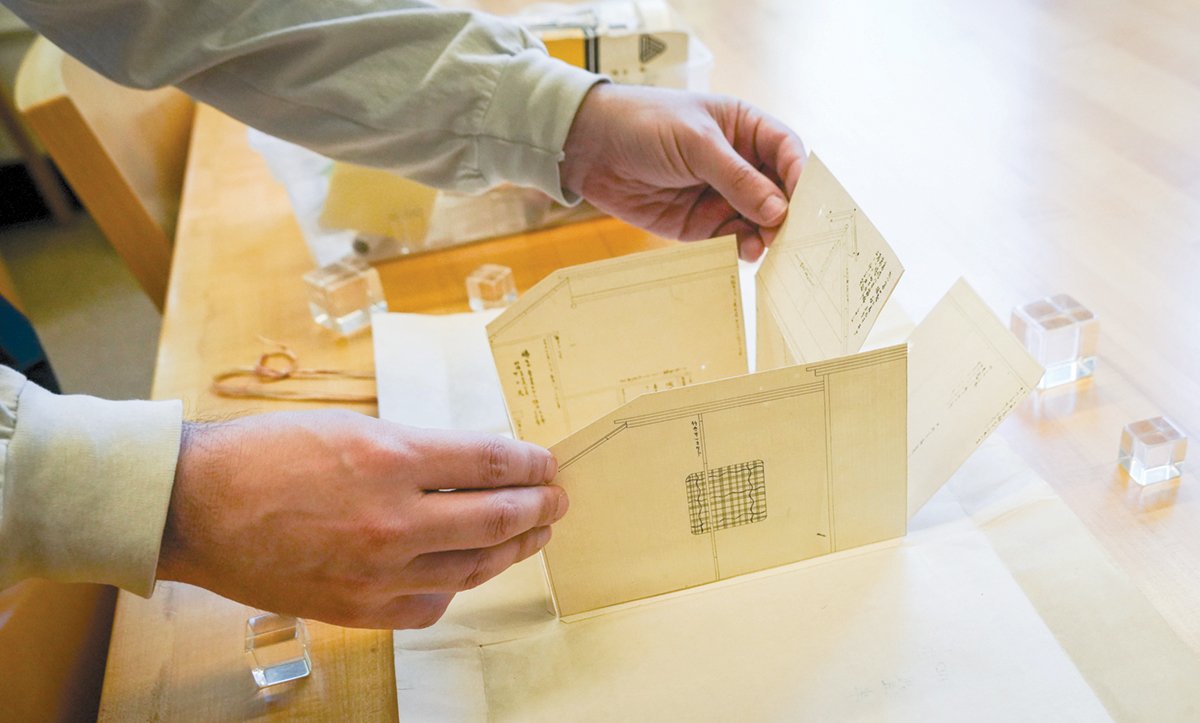
Chaseki Okoshiezu Mokuroku (Folding Drawings of the Famous Tea Houses)
Environmental Design Library
The Environmental Design Library is home to treasures galore, but perhaps librarian David Eifler’s favorite “unique” item is a stunning set of 90 pop-up models of Japanese tea houses. They are a far cry from the pop-ups that might leap to mind. The three-dimensional layouts, held in the library’s rare book room, are extremely detailed, precise, and complex. Stored in two wooden boxes, with hand-calligraphed titles on their exteriors, the models have flaps for walls, benches, ceilings, awnings, and other features, and include information on measurements and materials, along with other details. Eifler counts them among his favorite items for “their ability to represent in three dimensions architectural images normally rendered in two dimensions and their unique ability to fold flat for compact storage.” This set is from around 1930, but paper models like these have been used in Japan since at least the 1500s.
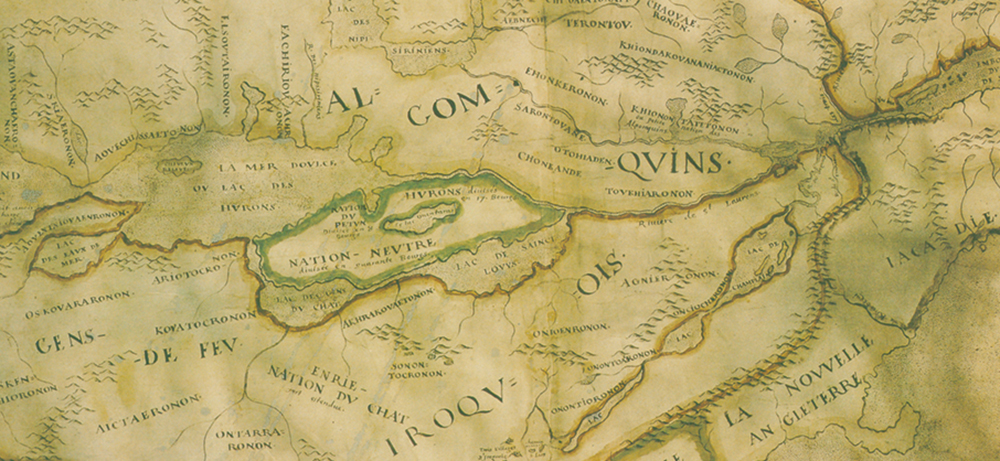
Nouuelle France
Earth Sciences and Map Library
It’s a cartographic time capsule hailing from the 17th century. The original manuscript map Nouuelle France, from 1641, was drawn in ink on animal skin, and is the oldest surviving map to depict all of the five Great Lakes. It’s also the oldest known map to show the locations of Indigenous groups in much of Eastern Canada, before they were scattered by pandemics and war. The Earth Sciences and Map Library’s version, a facsimile produced in the 1980s, is often used in library instruction, such as when cartography students come by for library tours. Among the Indigenous groups placed on the map is the Iroquoian-speaking Wendat confederacy. Core to the confederacy’s cosmology is its members’ identity as islanders, living on a tract of land with distinct boundaries at the center of the universe. (In fact, the name “Wendat” is understood to mean “people of the island.”) Notably, the French cartographer who drew the map envisioned the Wendat homeland of southern Ontario (a peninsula) as an island. This was no accident, according to Heiko Muhr, map metadata and curatorial specialist. The French counted the Wendat as valuable allies, and the map’s creator — likely Jean Bourdon, the first engineer-in-chief and surveyor of New France (the North American swath that the French colonized) — chose for the map to convey this vision.
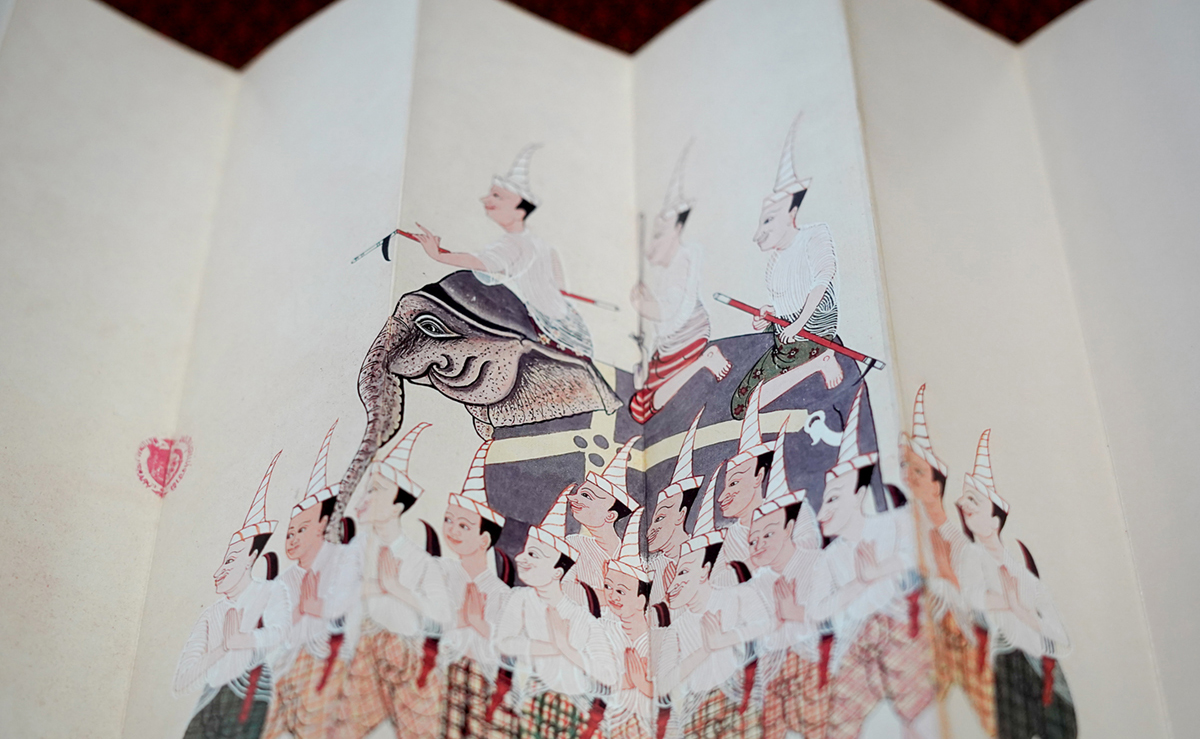
Krabūan phayuhayāttrā sathonlamāk samai Somdet Phra Nārāi Mahārāt: čhamlō̜ng čhāk tonchabap nangsư̄ Samut Thai khō̜ng Hō̜samut hǣng Chāt (Royal Procession in the Reign of King Narai: A Copy from Original Palimpsest in the National Library Collection)
South/Southeast Asia Library
At first glance, it might seem like a standard book. But when you open the cover, its true beauty is revealed. In a leporello, or folding book, stories spill across the peaks and valleys of long pages, pleated accordion style. Krabūan phayuhayāttrā, a Thai leporello manuscript in the collections of the South/Southeast Asia Library, depicts a royal procession held during the reign of Narai. In the mid- to late 17th century, Narai ruled the Ayutthaya Kingdom, the precursor to modern Thailand. Virginia Shih, curator for the Southeast Asia and Buddhist studies collections, acquired the book “by serendipity” at the Bangkok International Book Fair in 2018. The leporello is a reproduction of the original, which is preserved in the National Library of Thailand, and whose vivid visuals are copied from mural paintings at Yom Temple in Ayutthaya.